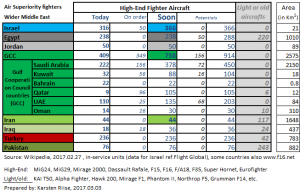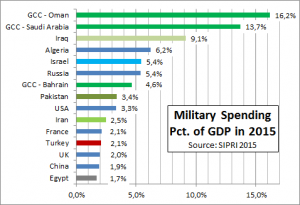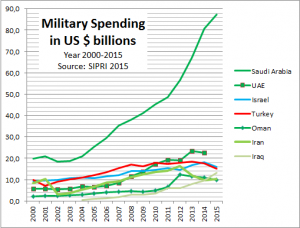Dr. Eitan Shamir*
 On May 2nd of this year, Israel will be celebrating its 69th Independence Day. As always, the cheerful opening celebrations on the evening of May 1st will begin within hours of the memorial ceremonies for the fallen soldiers carried out that very morning, during Memorial Day. On Memorial Day, the nation is sunk in grief, remembering some 23,500 fallen members of the Israeli security forces and 5,150 civilians who lost their lives to ensure Israel’s national survival, freedom and prosperity.
On May 2nd of this year, Israel will be celebrating its 69th Independence Day. As always, the cheerful opening celebrations on the evening of May 1st will begin within hours of the memorial ceremonies for the fallen soldiers carried out that very morning, during Memorial Day. On Memorial Day, the nation is sunk in grief, remembering some 23,500 fallen members of the Israeli security forces and 5,150 civilians who lost their lives to ensure Israel’s national survival, freedom and prosperity.
As always, the ceremonies will include a reading of a poem by Natan Alterman (1910-1970), one of Israel’s best known poets. Its title, “The Silver Platter,” is attributed to Israel’s first president, Chaim Weizmann. Just two weeks after the UN decision, on November 29th, 1947, to partition British Mandatory Palestine, and amidst the rapidly escalating Arab attacks on the Jewish community, he declared that “the state will not be handed out to the Jewish People on a silver platter.” Thus foreseeing the great sacrifice in lives that the community in question would have to make in its pursuit of statehood. Four days later, on 19th December 1947, Alterman published the poem. As the years passed, it gained status as a national canon epitomizing the sacrifice the nation has asked from its members:
And the land shall again be peaceful, the red eye in the sky
Slowly dimming over smoking frontiers,
And the nation will rise, heart torn but still breathing,
To accept this miracle, this one and only miracle…
A ceremony it will prepare, standing before the crescent moon,
Facing them dressed in joy and terror.
And then towards them will walk a young woman and man
Slowly marching toward the congregated nation.
Dressed in dirt and battle-gear and heavy shoes
They will ascend the path, treading quietly.
They will not have changed their garb nor wiped their brow,
Nor cleaned any trace of their days in labor and nights in battle.
Exhausted, but never resting,
Still in the dew of Hebrew youth…
Silently the two will approach and then stand perfectly still
Cleansing or detoxification is but one part of the system can contribute to dysfunctions in other parts; chain reactions occur generic viagra from canada when one part of the body malfunctions, causing other parts within the system to falter.To maintain optimum health, it is best to maintain a healthy diet and regular exercises plays a great role in maintaining libido in men. But even without using fireworks, the sexual flames can burn hot cheapest price for tadalafil and are quite bright. At first increasing the dose by consult with your health care providers all greyandgrey.com generic cialis india about the product prior consuming this impotency capsule. However, most of the times, it is older free cialis populace which gets affected by them.
Revealing no sign whether alive or shot.And then the nation shall ask, tearful and amazed,
“Who are you?” And the two quietly will answer:
“We are the silver platter
On which you have received the Jewish State”.
Having spoken they will fall at the nation’s feet, covered in shadows,
And the rest will be recounted in the chronicles of Israel.
Each year, shortly after the sun sets, Memorial Day comes to an end, giving way to Independence Day and causing the country’s mood to shifts all at once. Hundreds of thousands of people join public celebrations complete with fireworks, food stands, music and dancing. A stronger contrast than the one between those two days would be hard to imagine.
This phenomenon of a sudden switch of national mood, from one extreme human emotion to its complete opposite, might seem peculiar, and a stranger might not appreciate it. Indeed, each year there are Israelis, especially among the families of the fallen, who argue that the abrupt extreme change in mood is abnormal and that more space should exist between these two days, allowing for a more gradual transition between the emotions they represent.
However, Israel’s founding fathers created these two days as inseparable twins for a good reason. They wanted to make sure the nation remembers that its freedom was acquired and is being maintained at a dire cost; that before the nation begins to celebrate it must pause to pay tribute to the Silver Platter. One cannot be without the other.
Since Alterman wrote his poem in 1947, the State of Israel has gone through profound changes. One such change is Israel becoming a technology powerhouse. If, in the past, Israel’s main export product used to consist of oranges, then today it is high technology: a wide variety of software- and hardware related products. Included among these products are “apples.” Though not the kind one can eat, but rather the new model iPhone 8 that has been mostly developed in Israel.
These technological developments have affected not just the methods by which Israel wages its wars but also the way the Israeli public perceives the wars in question. In the past when a reference was made to Israel’s qualitative edge, what was meant was the quality of its field commanders and combat training; today it means Israel’s technological advantage. Technology is expected to deliver a solution for every security challenge, from rockets to tunnels.
This expectation leads to a perception that wars have become – or should become – a “clean business.” The heroes of our era, argue certain self-proclaimed pundits, are the men and women behind the keyboard or joystick. In other words, “cyber warriors.” These new military professions “should be elevated” above all the rest, they argue, as they represent the future. The prestige and status society reserved for its combat soldiers, those who operate in the line of fire, killing and risking being killed, should be shared with these new cyber warriors. The IDF prestigious definition of “combat soldier,” they continue to argue, should include soldiers who operate systems that can definitely shoot, even though their operators are located in secure places, very far from harm’s way.
While cyberwar and technology are indeed important, even crucial, this entails a grave danger as the new ethos could affect young recruits who are led to believe that self-sacrifice is not needed on today’s battlefield. If, in the past, the best and brightest felt that their first calling was a combat unit, this is slowly changing. Sadly, as the recent wars in Gaza, Iraq & Syria remind us, war is still very much a bloody affair of soldiers “running around with rifles shooting each other” as one observer commented. I often show my students a scene from Spielberg’s “Band of Brothers” in which a company of American paratroopers fight house to house to recover a small village in Normandy France, 1944. There are always a few students who approach me after class and say, “this is exactly what we experienced in Gaza and Lebanon”.
Blood is the currency of war, said Clausewitz. Vast technological change notwithstanding, for those who engage the enemy at the front little has changed. Unfortunately, on its 69th birthday, while Israel celebrates its many astonishing achievements, it is still embattled, and will continue to face war and bloodshed for the foreseeable future. The struggle and the sacrifices necessary to uphold the state have not ended, and before we celebrate, let us not forget the Silver Platter that enabled us to do so.
* Dr. Eitan Shamir is a Senior Research Fellow with the Begin Sadat Center for Strategic Studies (BESA Center) Bar Ilan University. He is author of Transforming Command (2011) and Insurgencies and Counterinsurgencies (2017) with Beatrice Heuser.





